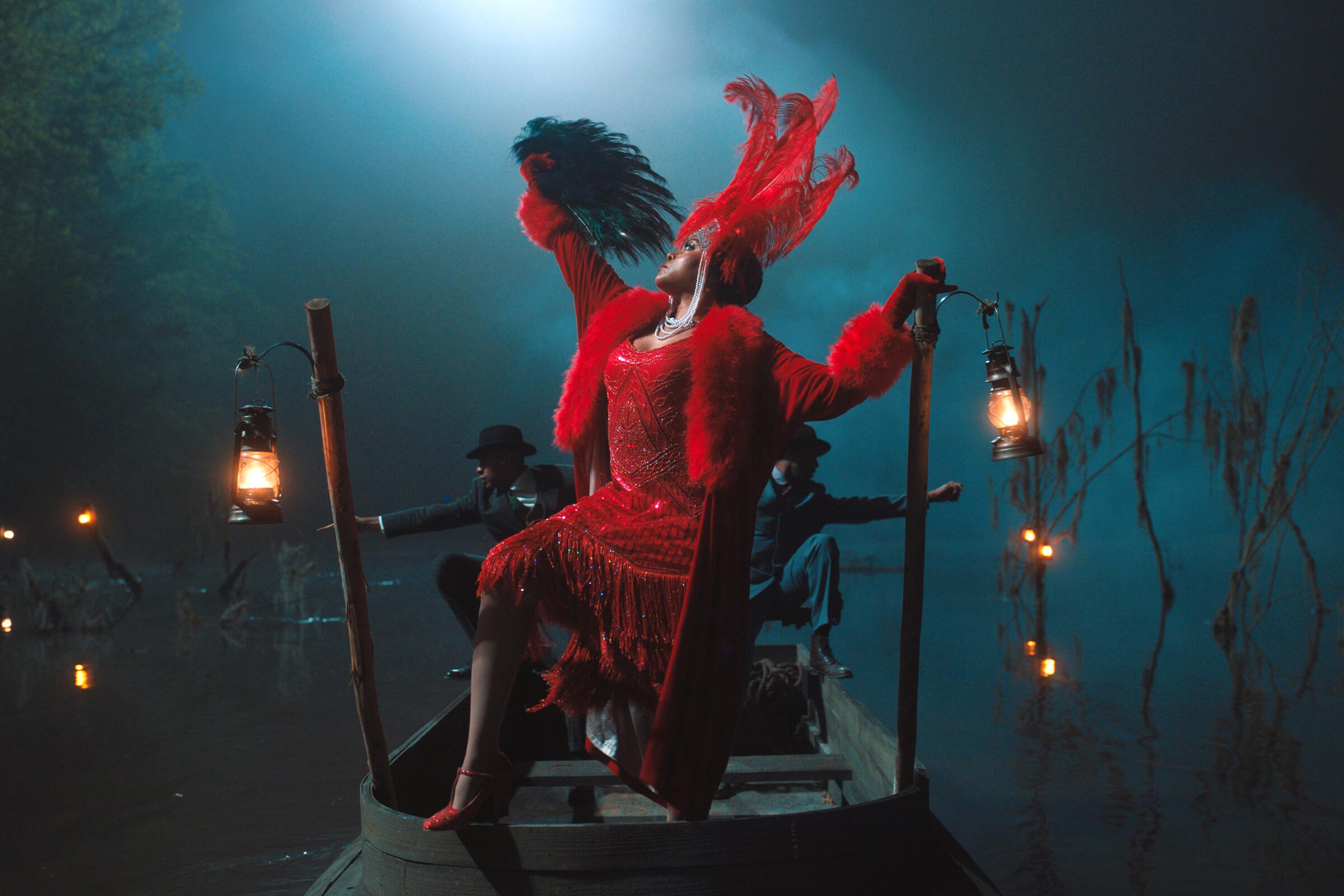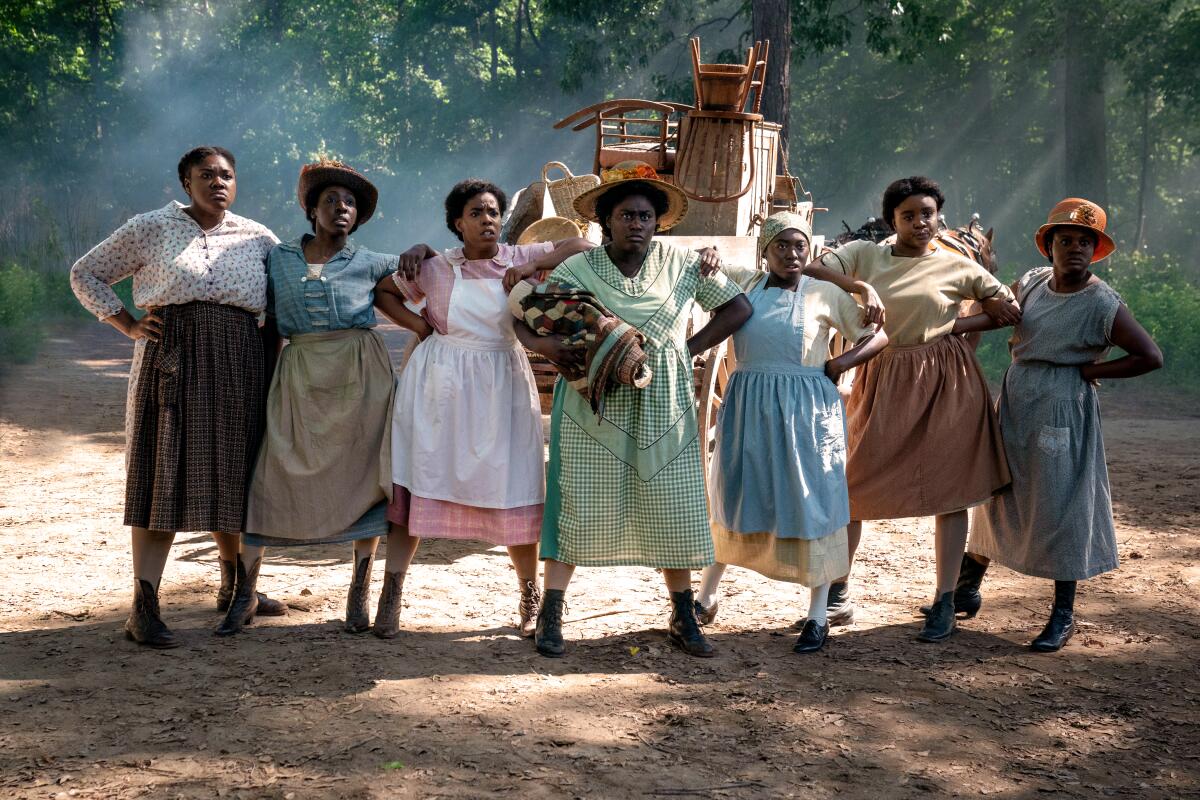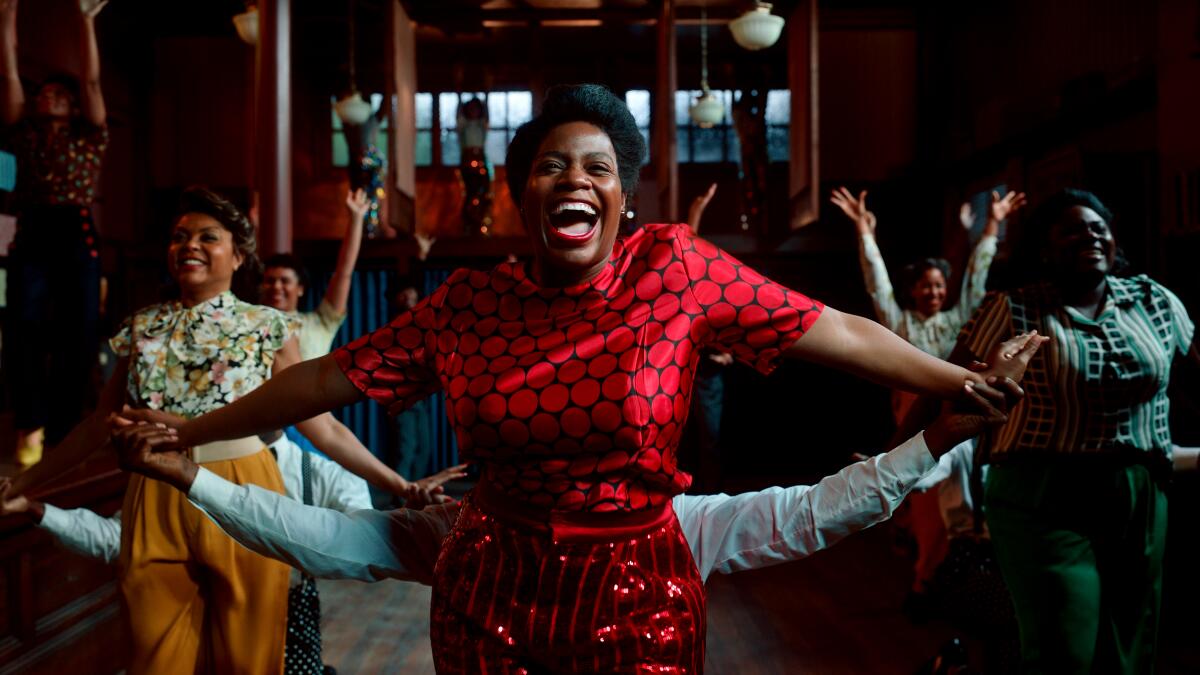Sign up for The Envelope
Get exclusive awards season news, in-depth interviews and columnist Glenn Whipp’s must-read analysis straight to your inbox.
You may occasionally receive promotional content from the Los Angeles Times.

It’s not often that a person gets a second bite at the apple in Hollywood. But Francine Jamison-Tanchuck has a good sense of what that feels like these days: Not only is she the costume designer for “The Color Purple,” a filmed adaptation of the Broadway musical — but back in 1985, she was the costume supervisor for women on … “The Color Purple.”
Jamison-Tanchuck, a veteran of the costuming world in both TV and film, spoke with The Envelope to discuss early jobs dressing only women, being influenced by “West Side Story” — and preferring to wear a “uniform” while working on set.
Your entree into the business back in the day was aided by getting into an apprenticeship program for people of color. Decades later, the industry is still creating those kinds of programs. What does that say to you about Hollywood’s evolution — or lack thereof?

Looking back through the years, I did not allow things to be a stumbling block for me. My mother was a surgical nurse, and my father was a classical pianist. I just came out of a family that never allowed us to say what we cannot achieve. I refuse to have someone say to me, “You cannot do that because of who you are.” I don’t allow it. That gives me the confidence and energy to keep going.
Was there a moment that spurred you into deciding to become a costume designer?
I loved creating characters and I just loved movies. I remember a film on TV called “Sayonara,” and I was amazed at the costumes. I remember “West Side Story” when I was just a little kid. I learned to sew at 7 years old; my mother taught me, but I wasn’t allowed on the [sewing] machine until I was 9. But I liked making clothing for my dolls and other people’s dolls.
Many of your early credits list you as a costume supervisor for “women,” including 1985’s “The Color Purple.” I think some of us forget that the gender division was a thing.
In some ways I can understand it, because I think some women were more comfortable around other women, and vice-versa — I guess — with men, but that’s the times we were in. That’s how things evolved. I worked on “The Color Purple” with the wonderful Aggie [Guerard] Rodgers, who was a dear friend.

Is that how your original “Color Purple” job came about, you knew Aggie?
She invited me on as the ladies’ supervisor. My job was to select a lot of the costumes from costume houses and line them up just like an assistant. What I remember so vividly was [stars] Whoopi Goldberg and Oprah Winfrey and all the wonderful costumes Aggie designed. I tried to keep a little of that in this more recent version of the film — the red of [Shug’s] dress and the feathers in her headdress. I got Aggie’s permission to copy a little bit of that. She said, “Honey, go for it.”
How did you want to do things differently for this year’s musical version, what was the brief?
“If something is meant for you, you can’t run from it,” the actor says of turning down the role of Shug for the Broadway musical but accepting it for the film.
[Director Blitz Bazawule] is very much a color person. His influence of color, style and texture was important to him. It was even more challenging [because it was a musical] — you’re dealing with dancers and a lot of background. You cannot allow the dance outfits to be flamboyant. We had to maneuver through keeping things real but also keeping it lively. With the principals alone, we were looking at 30 to 40 people; with the entire film, over a thousand. Thousands of costumes.
The colors of the film evolve into a journey of their own — from pastels to bright colors. That must have been intentional.
[Early on] you’re dealing with country summer and the period, 1909, 1920, when colors are a little bit somber. As things went on, the colors got darker, until the end when [Celie] has her [clothing] shop and it bursts with color. We’re talking 1946 by then, just before Christian Dior’s new look appeared. I wanted, and Blitz wanted, to have the color explode in a way, because it’s happier, she’s more mature, she’s breaking out of this world of trauma and finally knows who she is.

How conscious are you about what you wear every day? Or are you a “sweatpants at home” kind of person like the rest of us?
Sweatpants around the house. In fact, I have some on right now. When I work, I like to think I’m wearing a uniform — something simple, fashionable and nice that I don’t have to put a lot of my time into because my mind is on designing this particular film.
Is there an advantage to having a Black costume designer create clothing for Black people?
For me it helps to have a costume designer with vision. That person can be any color. Costume designers look at ourselves as artists. We are artists. Aggie Rodgers is a person of Irish heritage, and she was a costume designer on the first “The Color Purple.” I like the idea that symphonies pick their musicians — they go behind a curtain and you don’t know who’s behind the curtain, you just pick from the music. You see costumes on the screen and don’t know whether this person is someone of color, young or old. Look at my work, not just the color of my skin or gender. Look at what I can do. Look at how it lines up on screen.
Sign up for The Envelope
Get exclusive awards season news, in-depth interviews and columnist Glenn Whipp’s must-read analysis straight to your inbox.
You may occasionally receive promotional content from the Los Angeles Times.